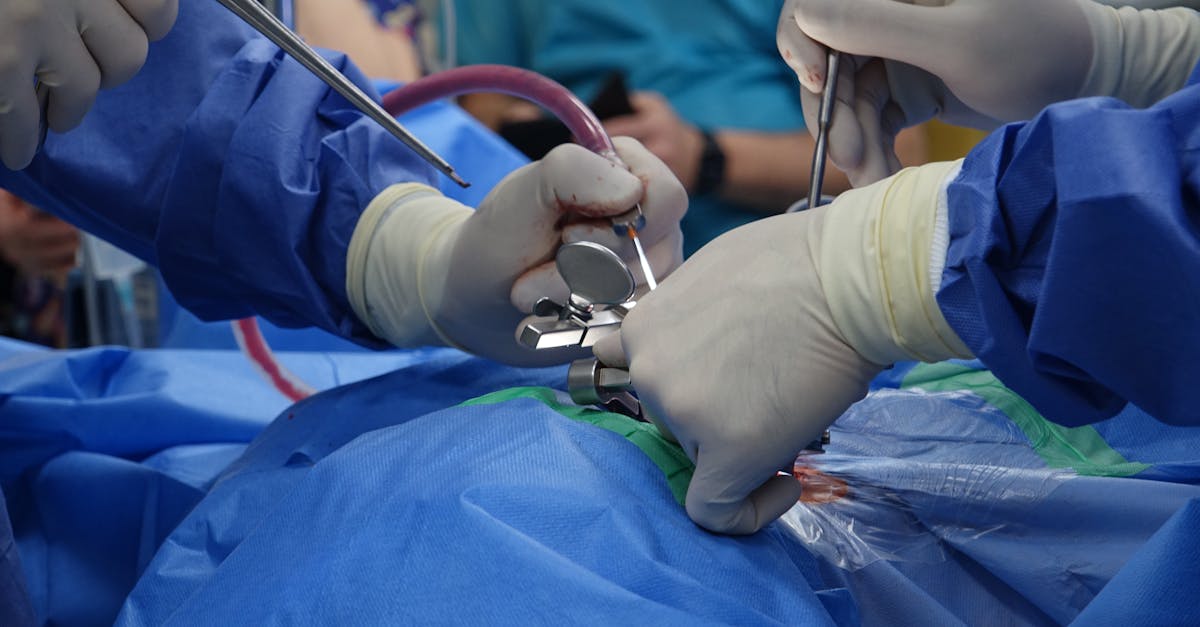|
In Short, frozen shoulder, also known as adhesive capsulitis, is a condition marked by pain and limited mobility in the shoulder joint. This ailment can significantly hinder daily activities and overall quality of life. The primary benefits of addressing frozen shoulder include restored mobility, reduced discomfort, and enhanced functional capabilities. Treatment often involves tailored physical therapy and specific exercises that promote gradual improvement in range of motion. Individuals can regain their strength and enjoy a greater sense of freedom from pain through a structured rehabilitation approach. |
Unlocking Mobility: A Guide to Overcoming Frozen Shoulder offers an insightful overview of the challenging condition known as frozen shoulder or adhesive capsulitis. This guide emphasizes the importance of understanding the three distinct phases of the condition, which include freezing, frozen, and thawing phases. It highlights the pivotal role of physical therapy and tailored stretching exercises in restoring shoulder mobility and alleviating pain. Moreover, it advocates for additional supportive measures like ice therapy and potential corticosteroid injections, aiming to enhance the recovery experience and empower individuals to reclaim their functional movement.

Welcome to Pulse Align: Your Path to Wellness
At Pulse Align, we embrace a non-invasive, innovative approach that emphasizes restoring the body’s natural balance and posture through gentle, imperceptible pulses. This gentle stimulation facilitates the body’s natural processes, leading to reduced muscle and joint tension, ultimately contributing to improved overall well-being.
Recalibrating Your Body’s Natural Harmony
Our focus is not on discomfort or conditions but rather on supporting the body’s innate ability to recalibrate itself naturally. This harmonious approach often results in enhanced comfort and improved posture, allowing clients to experience a greater sense of well-being as they engage in their daily activities.
Personalized Wellness Journey
We pride ourselves on a personalized approach, ensuring that each client receives tailored care that meets their unique needs. Many clients have shared positive experiences of improved neck and back tension, overall wellness, and balance in their daily lives. These transformations reflect our commitment to guiding individuals on their journey towards holistic health.
Explore Our Services Today
We invite you to visit our website to learn more about how Pulse Align can support you and your family. With locations available in cities like La Prairie, Mont-Royal, and Terrebonne, and many more, you can easily find a clinic nearby. Book a consultation today to experience our safe, non-invasive, and family-friendly approach. Remember, Pulse Align complements your healthcare services to enhance your wellness journey naturally.
- Understanding Frozen Shoulder: Acknowledge the condition’s impact on shoulder mobility.
- Initial Assessment: Seek professional diagnosis to tailor treatment effectively.
- Physical Therapy: Engage in a structured program focusing on mobility and strength.
- Stretching Techniques: Incorporate gentle stretches crucial for enhancing flexibility.
- Pain Management: Use ice therapy and prescribed medications to alleviate discomfort.
- Home Exercise Regimen: Practice targeted exercises consistently for maximum results.
- Corticosteroid Injections: Consider injections for reducing inflammation as needed.
- Holistic Approach: Embrace lifestyle changes—nutrition and stress management—to complement recovery.
- Community Support: Seek encouragement and shared experiences from local groups in Montréal, Mont-Royal, and Terrebonne.

Frozen shoulder, or adhesive capsulitis, is a condition that can lead to debilitating stiffness and pain in the shoulder joint. This guide will offer insights into effective strategies for overcoming the limitations posed by frozen shoulder, helping to restore mobility and improve overall quality of life. We’ll explore various methods, including exercise regimens, pain management, and therapeutic approaches to promote healing.
Understanding Frozen Shoulder
Frozen shoulder typically occurs in stages, including freezing, frozen, and thawing, each with distinct symptoms and durations. Understanding these stages is essential to addressing the condition effectively. During the freezing phase, pain and stiffness may escalate, making everyday tasks difficult. In the frozen phase, stiffness often peaks, but pain might diminish. The thawing phase marks the gradual return of mobility. Recognizing these phases enables a tailored rehabilitation plan to facilitate healing.
Physical Therapy as a Cornerstone
Physical therapy plays a critical role in restoring shoulder function. A qualified therapist will design a targeted rehabilitation program that incorporates specific exercises aimed at improving flexibility and strength. These may include gentle stretches alongside strength-enhancing movements to ensure the shoulder joint regains its range of motion safely. Regular therapy sessions not only promote healing but also instill a sense of empowerment in individuals dealing with frozen shoulder.
Importance of Stretching Exercises
Incorporating stretching exercises into your routine is paramount in improving mobility and alleviating discomfort. Gentle stretches can gradually increase shoulder flexibility without causing undue stress. Exercises such as the towel stretch, cross-body arm stretch, and pendulum swing help promote a greater range of motion. Consistency is crucial; aim to perform these stretches multiple times a day to optimize results.
Pain Management Techniques
Managing pain effectively is integral to the recovery process. Utilize ice therapy by applying ice packs to the affected shoulder for short intervals to reduce swelling and numb discomfort. This method can be particularly beneficial after completing exercises, allowing for a more tolerable recovery period. Additionally, discussing the potential use of corticosteroid injections with your healthcare provider could yield significant benefits in controlling inflammation in the joint.
Home Exercise Programs
Developing a structured home exercise program complements professional therapy and promotes continued progress. Tailor your program with exercises focusing on shoulder flexibility and strength training. Movements such as wall crawls and doorway stretches can significantly enhance mobility when performed consistently. Establishing a routine ensures that efforts do not wane outside of therapy sessions, supporting long-lasting improvements.
Exploring Holistic Approaches
While traditional methods hold great value, considering a holistic approach to health can foster an overall sense of well-being. Adopting lifestyle changes, such as maintaining a balanced diet and incorporating stress management techniques, can complement physical recovery and bolster neuromuscular health. By viewing recovery as an interconnected process, individuals can address the underlying factors contributing to frozen shoulder.
Embracing a Journey of Recovery
Recovering from frozen shoulder requires dedication and a commitment to understanding one’s body. By focusing on rehabilitation, pain management, and holistic health, individuals can reclaim their mobility and restore functionality. Each achievement in the recovery journey signifies progress toward a life free from the constraints of pain. Embrace this transformative experience, and remember that a collaborative approach contributes to overall wellness aligned with the principles of Pulse Align, aiding in neuromuscular balance and harmony.
| Aspect | Wellness and Natural Balance |
|---|---|
| Approach | Promoting gentle movements to facilitate natural recovery. |
| Stretching Techniques | Utilizing gentle stretches to enhance flexibility and promote healing. |
| Physical Activity | Encouraging light activities that support joint health and circulation. |
| Patient Awareness | Fostering understanding of body signals to enhance self-awareness. |
| Rest | Allowing ample time for the body to recover and recalibrate naturally. |
| Functional Movements | Incorporating daily activities to reinforce muscle balance and function. |
| Supportive Environment | Creating a calming space that encourages relaxation and healing. |
| Holistic Lifestyle | Emphasizing a balanced diet and stress management for overall wellness. |
| Complements to Traditional Care | Working alongside traditional practices to enhance overall health. |
| Community Engagement | Building connections that support shared wellness journeys. |

Empowering Your Wellness Journey with Pulse Align
“I can’t express enough how transformative my experience with Pulse Align has been! Living in Mont-Royal, I sought help for my frozen shoulder, and their unique approach has allowed my body to naturally recalibrate itself. I’ve noticed significant improvements in my mobility and overall comfort without invasive procedures. The staff’s dedication to promoting holistic recovery is commendable.” – Emily R.
“As a resident of La Prairie, I’ve struggled with shoulder pain for years. Discovering Pulse Align was a game-changer! Their gentle techniques empowered my body to restore balance and alignment. I felt improvements almost immediately, and I now enjoy improved daily function. I highly recommend their services for anyone seeking natural healing.” – Robert T.
“Living in Terrebonne, I can honestly say that Pulse Align’s method has rejuvenated my body. Their focus on the body’s inherent ability to heal resonates with me since I experienced a notable decrease in discomfort through their gentle sessions. The support I received made my wellness journey incredibly enriching.” – Sarah M.
“Finding effective treatments for my frozen shoulder in Sainte-Marie was difficult until I arrived at Pulse Align. I was pleasantly surprised by how their services helped me reclaim my mobility effectively. It’s refreshing to know that their approach complements a wellness philosophy that is truly client-centered.” – David L.
“The holistic perspective of Pulse Align has truly made a difference in my life. Residing in Châteauguay, I found that the seamless combination of gentle therapy and personalized care empowered my body to adapt and recalibrate naturally. Since joining, my quality of life has significantly improved, and I’m more active than ever!” – Claire K.
“As someone from Deux-Montagnes, my journey with Pulse Align has been nothing short of amazing. Their unique approach supports the body’s natural mechanisms, and the positive changes I’ve experienced in my shoulder mobility are a testament to that. I feel liberated and rejuvenated, and I can’t recommend them enough!” – John P.
Clients throughout regions such as Chicoutimi and Panama City have also expressed their gratitude for Pulse Align’s services. The emphasis on collaboration with healthcare teams ensures that every individual and family receives the necessary support on their wellness journey. To explore how you can experience similar benefits, visit our Our Clinics page and discover the transformative power of holistic recovery.”
Dr. Sylvain Desforges is an esteemed expert in the fields of osteopathy, naturopathy, and manual medicine. As the founding president of TAGMED clinics and the ACMA association, Dr. Desforges has dedicated his career to revolutionizing healthcare practices, especially in the domain of chronic pain management. His profound expertise allows him to approach patient care with a unique blend of traditional and innovative techniques aimed at optimizing health outcomes.
With an unwavering commitment to advancing patient care, Dr. Desforges has cultivated a holistic view of health that goes beyond mere symptom management. He emphasizes the necessity for evidence-based practices that integrate advanced technologies. In his clinics, patients benefit from a range of modern treatment methods including spinal decompression, laser therapy, and shockwave therapy. These approaches are designed to alleviate pain, enhance mobility, and restore functionality, particularly for those suffering from conditions like frozen shoulder.
Frozen shoulder, scientifically known as adhesive capsulitis, is a debilitating condition characterized by stiffness and pain in the shoulder joint, leading to restricted range of motion. Dr. Desforges’s objectives align with empowering patients to reclaim their mobility and alleviate the discomfort associated with this condition. By applying manual techniques alongside cutting-edge technology, he can facilitate the recovery process and foster a more effective path toward healing.
Each patient journey through Dr. Desforges’s clinic is personalized, reflecting his belief that treatment must be tailored to individual needs for maximum effectiveness. Utilizing his extensive background in manual therapy and rehabilitation, he guides patients through structured therapy sessions that focus on targeted exercises designed to restore shoulder function. This customized approach significantly enhances patients’ experiences, giving them not only relief but also a renewed sense of agency over their health.
Dr. Desforges’s clinics are situated in key locations throughout Montréal, Terrebonne, and Mont-Royal, making his innovative treatments accessible to a diverse community. Each facility is equipped with advanced technologies that support various pain management strategies, ensuring that patients receive the highest quality care. This accessibility is crucial, as the approach taken at TAGMED emphasizes a collaborative relationship between the practitioner and the patient, ultimately fostering a supportive environment conducive to healing.
In addition to hands-on treatment methods, Dr. Desforges advocates for the importance of education in the healing process. He encourages patients to learn about their conditions, equipping them with the knowledge necessary to understand their bodies and the healing mechanisms at play. Through workshops and informative sessions, he informs patients about proactive strategies to manage their conditions and enhance their overall wellness.
Dr. Sylvain Desforges stands as a leader in the realm of alternative medicine, continuously pushing the boundaries of what is possible in chronic pain treatment. His commitment to integrating modern technologies with traditional healing methods speaks volumes about his dedication to patient care. By unlocking mobility and providing compassionate support, he significantly impacts the quality of life for individuals navigating the challenges of conditions like frozen shoulder.
Understanding TAGMED’s Neurospinal Decompression Technology: A Path to Chronic Pain Relief
Mechanism of Action
TAGMED’s neurospinal decompression technology functions by applying a controlled and progressive traction force to the spine. This innovative approach effectively increases the space between the vertebrae, which in turn alleviates pressure on the intervertebral discs and nerve roots. As the vertebrae are gently separated, a negative pressure within the discs is created, promoting the retraction of herniated or bulging discs back toward their normal position. This process not only reduces pain but also enhances fluid circulation in the targeted areas, facilitating the delivery of essential nutrients while removing inflammatory byproducts. Consequently, the combined effects of increased disc space and improved circulation play a vital role in reducing inflammation and providing pain relief.
Specific Benefits
The non-invasive nature of TAGMED’s decompression therapy presents a compelling advantage for patients suffering from chronic pain and symptoms associated with conditions such as herniated discs, spinal stenosis, and moderate to severe foraminal narrowing. By specifically targeting the neural structures, this approach effectively alleviates pressure, resulting in enhanced fluid circulation around the discs and surrounding tissues. This can lead to significantly improved recovery outcomes, allowing patients to reclaim their activities with newfound freedom. Additionally, the research indicates that patients often experience a quicker attenuation of symptoms compared to traditional methods, thus enhancing their overall quality of life.
Comparison with Other Treatments
When evaluating the efficacy of TAGMED’s neurospinal decompression technology against other conventional methods, several crucial distinctions emerge. Traditional treatment options such as medications, steroid injections, and even surgical interventions typically address symptoms rather than the root causes. They may also present higher risks associated with dependency and side effects. In contrast, TAGMED’s technology avoids invasive procedures, allowing for a more patient-friendly experience. Many patients report faster recovery times, along with a more significant and long-lasting relief from pain compared to other therapeutic avenues.
Case Studies and Testimonials
Numerous patients have reported substantial benefits from TAGMED’s neurospinal decompression therapy. For example, one patient suffering from chronic lower back pain due to a herniated disc experienced a remarkable reduction in pain levels after several sessions of treatment. This patient noted a return to regular activities with minimal discomfort. Similarly, another individual grappling with spinal stenosis highlighted an increase in mobility and a decreased dependency on pain medications following therapy. These testimonials underscore TAGMED’s success in delivering substantial pain relief and promoting functional recovery, illustrating the effectiveness of this innovative approach.
Conclusion: Unlocking Mobility with Focused Strategies
Frozen shoulder, or adhesive capsulitis, presents a significant challenge for those affected, manifesting as a painful and debilitating condition that restricts the shoulder’s range of motion. Understanding the intricacies of this condition is essential for fostering effective recovery strategies. By recognizing the stages of frozen shoulder—from freezing to thawing—individuals can navigate their treatment paths more effectively.
At the core of overcoming frozen shoulder is physical therapy, which plays a pivotal role in restoring movement and alleviating discomfort. Engaging in tailored exercise programs that incorporate gentle stretching is essential for improving flexibility and strength. Additionally, strategies such as ice therapy can provide relief from pain and inflammation, further supporting the overall healing process.
It is also important to consider holistic approaches, integrating lifestyle modifications and patient education into the recovery journey. By empowering individuals with knowledge about their condition, patients can make informed decisions that align with their wellness goals. Moreover, the role of ongoing assessment in monitoring progress cannot be overlooked; regular evaluations ensure that treatment plans remain adaptable and responsive to each individual’s needs.
Ultimately, unlocking mobility requires a comprehensive, personalized approach that emphasizes commitment and consistency in treatment. As patients embrace their recovery journeys, they can anticipate a gradual improvement in their quality of life, reclaiming the ability to engage in daily activities without the constraints of pain. It is through these focused strategies that individuals can reestablish their strength and mobility—transforming their experiences and fostering a more profound connection with their physical well-being.

Do you suffer from a chronic condition that responds little or not at all to conservative treatments?
In the quest for comfort and well-being, many individuals are exploring innovative, non-invasive methods that promote a natural balance within their bodies. Pulse Align offers a gentle and effective approach, utilizing imperceptible pulses to help restore the body’s natural alignment and posture. This modern technique aims to reduce muscle and joint tension, allowing individuals to navigate daily activities with increased ease and comfort.
At Pulse Align, the focus is not on discomforts or specific conditions, but rather on empowering the body to recalibrate itself naturally. By encouraging a return to balance, clients often experience amazing improvements in their overall comfort and posture. This non-invasive method respects the body’s own processes, allowing it to flourish and thrive without the need for intense interventions.
With a personalized approach, Pulse Align caters to the unique needs of each client, creating a welcoming environment where everyone can feel at ease. Numerous testimonials from satisfied clients highlight notable improvements in muscle tension, overall wellness, and more. Many have shared heartwarming stories of feeling more aligned and balanced in their daily lives, making it clear that this alternative approach can significantly enhance the overall experience of well-being and vitality.
We invite you to explore the possibilities that Pulse Align offers. Discover nearby locations in cities such as La Prairie, Mont-Royal, and Terrebonne, and book a consultation tailored to you and your family’s wellness journey. Remember that Pulse Align works in harmony alongside your existing healthcare team, complementing their services while ensuring your holistic well-being. With a focus on safe, non-invasive methods suitable for the whole family, Pulse Align stands as a beacon of hope for those looking to enhance their overall quality of life.
To learn more about our services and book an appointment, visit our website: Pulse Align.
Frequently Asked Questions
Shoulder Pain
Can acupuncture help?
Acupuncture may relieve pain and muscle tension, but effectiveness varies among individuals.
Can swimming cause shoulder pain?
Yes, especially in regular swimmers. Repetitive movements can lead to tendinitis or overuse injuries.
Can a shoulder dislocation cause chronic pain?
Yes, a poorly managed or repeated dislocation can lead to instability and long-term shoulder pain.
Are throwing sports more at risk for shoulder problems?
Yes, repetitive throwing (baseball, handball) heavily stresses the rotator cuff, raising injury risk.
Is ice always recommended?
Ice is useful in acute phases to reduce inflammation, but shouldn’t be applied too long or directly on the skin.
Is post-surgery physiotherapy necessary?
Yes, tailored rehabilitation is essential to regain strength, mobility, and prevent post-operative stiffness.
Can I use resistance bands to relieve shoulder pain?
Yes, resistance bands allow progressive strengthening of shoulder muscles, but do it without pain.
Does working at a computer contribute to shoulder pain?
A poorly set-up workstation, a keyboard, or mouse placed too far away can cause shoulder tension.
Can rheumatoid arthritis affect the shoulder?
Yes, rheumatoid arthritis, an inflammatory disease, can affect the shoulder causing pain and stiffness.
Is complete rest recommended?
Not necessarily. Complete immobilization can stiffen the joint. Gentle, controlled movement is often beneficial.
Adam Blanc understands that shoulder pain can do more than slow you down—it can impact your entire quality of life. As a Shoulder Pain Awareness Advocate at Pulse Align, he’s dedicated to showing readers that genuine relief is not just possible, but within reach. Drawing on the latest research, Adam combines expert insights with compassionate guidance, inspiring people to move toward greater comfort and mobility. His approach is about more than just managing symptoms; it’s about empowering individuals to rediscover their strength and embrace every moment, free from the constraints of pain.
Medical Disclaimer
The information and advice provided on this site do not replace the advice, diagnosis, or treatment of a healthcare professional. Please note that the author of this article is neither a doctor nor a specialist in a medical specialty as defined by the Collège des médecins du Québec. Manual medicine, functional medicine, and sports medicine as described on this site exclude any medical treatment or diagnosis made by a doctor or medical specialist. Always consult your doctor for any medical questions. For more details, please read our complete Legal Notice.




